A Thermal-Switchable Metamaterial Absorber Based on the Phase-Change Material of Vanadium Dioxide
Abstract
:1. Introduction
2. The Theory of the Material Absorber
3. The Design of the Metamaterial Absorber
3.1. The Preparation of Vanadium Dioxide
3.2. The Design of the Material Absorber
4. The Experimental Measure
5. Conclusions
Author Contributions
Funding
Data Availability Statement
Conflicts of Interest
References
- Park, J.W.; Tuong, P.V.; Rhee, J.Y.; Kim, K.W.; Jang, W.H.; Choi, E.H.; Chen, L.Y.; Lee, Y. Multi-band metamaterial absorber based on the arrangement of donut-type resonators. Opt. Express 2013, 21, 9691–9702. [Google Scholar] [CrossRef] [PubMed]
- Peng, X.Y.; Wang, B.; Lai, S.; Zhang, D.H.; Teng, J.-H. Ultrathin multi-band planar metamaterial absorber based on standing wave resonances. Opt. Express 2012, 20, 27756–27765. [Google Scholar] [CrossRef] [PubMed]
- Costa, F.; Genovesi, S.; Monorchio, A.; Manara, G. A Circuit-Based Model for the Interpretation of Perfect Metamaterial Absorbers. IEEE Trans. Antennas Propag. 2013, 61, 1201–1209. [Google Scholar] [CrossRef]
- Phon, R.; Ghosh, S.; Lim, S. Novel Multifunctional Reconfigurable Active Frequency Selective Surface. IEEE Trans. Antennas Propag. 2019, 67, 1709–1718. [Google Scholar] [CrossRef]
- Zhu, J.; Li, D.; Yan, S.; Cai, Y.; Liu, Q.H.; Lin, T. Tunable microwave metamaterial absorbers using varactor-loaded split loops. EPL 2015, 112, 54002. [Google Scholar] [CrossRef]
- Shamseddine, I.; Pennec, F.; Biwole, P.; Fardoun, F. Supercooling of phase change materials: A review. Renew. Sustain. Energy Rev. 2022, 158, 112172. [Google Scholar]
- Lee, S.; Meyer, T.L.; Sohn, C.; Lee, D.; Nichols, J.; Lee, D.; Seo, S.S.A.; Freeland, J.W.; Noh, T.W.; Lee, H.N. Electronic structure and insulating gap in epitaxial VO2 polymorphs. APL Mater. 2015, 3, 337–367. [Google Scholar] [CrossRef]
- Zhang, Y.; Chou, J.B.; Li, J.; Li, H.; Du, Q.; Yadav, A.; Zhou, S.; Shalaginov, M.Y.; Fang, Z.; Zhong, H.; et al. Extreme Broadband Transparent Optical Phase Change Materials for High-Performance Nonvolatile Photonics; Massachusetts Institute of Technology: Boston, MA, USA, 2018. [Google Scholar]
- Paik, T.; Hong, S.H.; Gordon, T.; Gaulding, A.; Kagan, C.; Murray, C. Switchable vanadium dioxide (VO2) metamaterials fabricated from tungsten doped vanadia-based colloidal nanocrystals. In Proceedings of the APS March Meeting 2013, Baltimore, MD, USA, 18–22 March 2013. [Google Scholar]
- Chen, S.; Wang, Z.; Ren, H.; Chen, Y.; Yan, W.; Wang, C.; Li, B.; Jiang, J.; Zou, C. Gate-controlled VO2 phase transition for high-performance smart windows. Sci. Adv. 2019, 5, eaav6815. [Google Scholar] [PubMed]
- Huang, H.Y.; Xiao-Feng, X.U.; Yuan-Chun, Y.U.; Bao, F.-J. Fabrication and Optical Properties of W-doped VO_2 Nano Thin Films via Sputtering Oxidation Coupling Method. J. Donghua Univ. Nat. Sci. 2013, 39, 130–134. [Google Scholar]
- Kim, H.T.; Yong, W.L.; Kim, B.J.; Chae, B.G.; Yun, S.J.; Kang, K.Y.; Han, K.J.; Yee, K.J.; Lim, Y.S. Monoclinic and Correlated Metal Phase in VO2 as Evidence of the Mott Transition: Coherent Phonon Analysis. Phys. Rev. Lett. 2006, 97, 266401. [Google Scholar] [CrossRef] [PubMed]
- Manning, T.D.; Parkin, I.P.; Pemble, M.E.; Sheel, D.; Vernardou, D. Intelligent Window Coatings: Atmospheric Pressure Chemical Vapor Deposition of Tungsten-Doped Vanadium Dioxide. Cheminform 2004, 35, 744–749. [Google Scholar] [CrossRef]
- Ben-Messaoud, T.; Landry, G.; Gariépy, J.P.; Ramamoorthy, B.; Ashrit, P.; Haché, A. High contrast optical switching in vanadium dioxide thin films. Opt. Commun. 2008, 281, 6024–6027. [Google Scholar] [CrossRef]
- Chen, X.S.; Li, J.S. Tunable terahertz absorber with multi-defect combination embedded VO2 thin film structure. Acta Phys. Sin. Chin. Ed. 2020, 69, 027801. [Google Scholar] [CrossRef]
- Yang, J.; Qu, S.; Ma, H.; Wang, J.; Pang, Y. Dual-band tunable infrared metamaterial absorber with VO2 conformal resonators. Opt. Commun. 2017, 402, 518–522. [Google Scholar] [CrossRef]
- Kim, Y.; Wu, P.C.; Sokhoyan, R.; Mauser, K.A.; Glaudell, R.; Shirmanesh, G.K.; Atwater, H.A. Phase Modulation with Electrically Tunable Vanadium Dioxide Phase-Change Metasurfaces. Nano Lett. 2019, 19, 3961–3968. [Google Scholar] [CrossRef] [PubMed]
- Liu, H.; Fan, Y.X.; Chen, H.G.; Li, L.; Tao, Z.-Y. Active tunable terahertz resonators based on hybrid vanadium oxide metasurface. Opt. Commun. 2019, 445, 277–283. [Google Scholar] [CrossRef]
- Lv, T.T.; Li, Y.X.; Ma, H.F.; Zhu, Z.; Li, Z.P.; Guan, C.Y.; Shi, J.; Zhang, H.; Cui, T.J. Hybrid metamaterial switching for manipulating chirality based on VO2 phase transition. Sci. Rep. 2016, 6, 23186. [Google Scholar] [CrossRef] [PubMed]
- Anagnostou, D.E.; Torres, D.; Teeslink, T.S.; Sepulveda, N. Vanadium Dioxide for Reconfigurable Antennas and Microwave Devices: Enabling RF Reconfigurability Through Smart Materials. IEEE Antennas Propag. Mag. 2020, 62, 58–73. [Google Scholar] [CrossRef]
- Pan, K.C.; Wang, W.; Shin, E.; Freeman, K.; Subramanyam, G. Vanadium Oxide Thin-Film Variable Resistor-Based RF Switches. IEEE Trans. Electron Devices 2015, 62, 2959–2965. [Google Scholar]
- Wang, L.; Xia, D.; Ding, X.; Wang, Y.; Fu, Q. Design of tunable polarization-unrelated metamaterials absorber based on VO2. Electron. Compon. Mater. 2018, 34, 11–14. [Google Scholar]
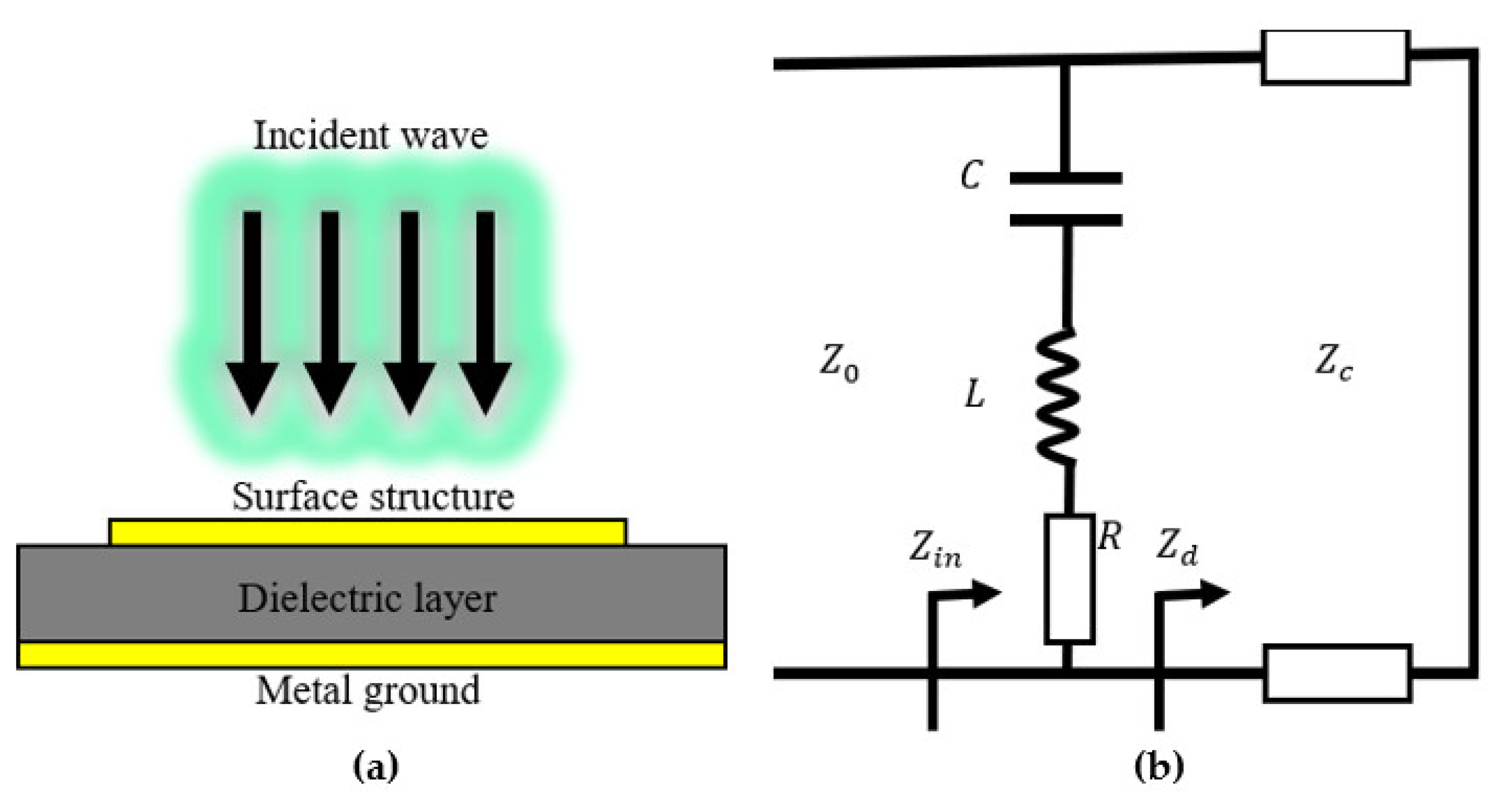
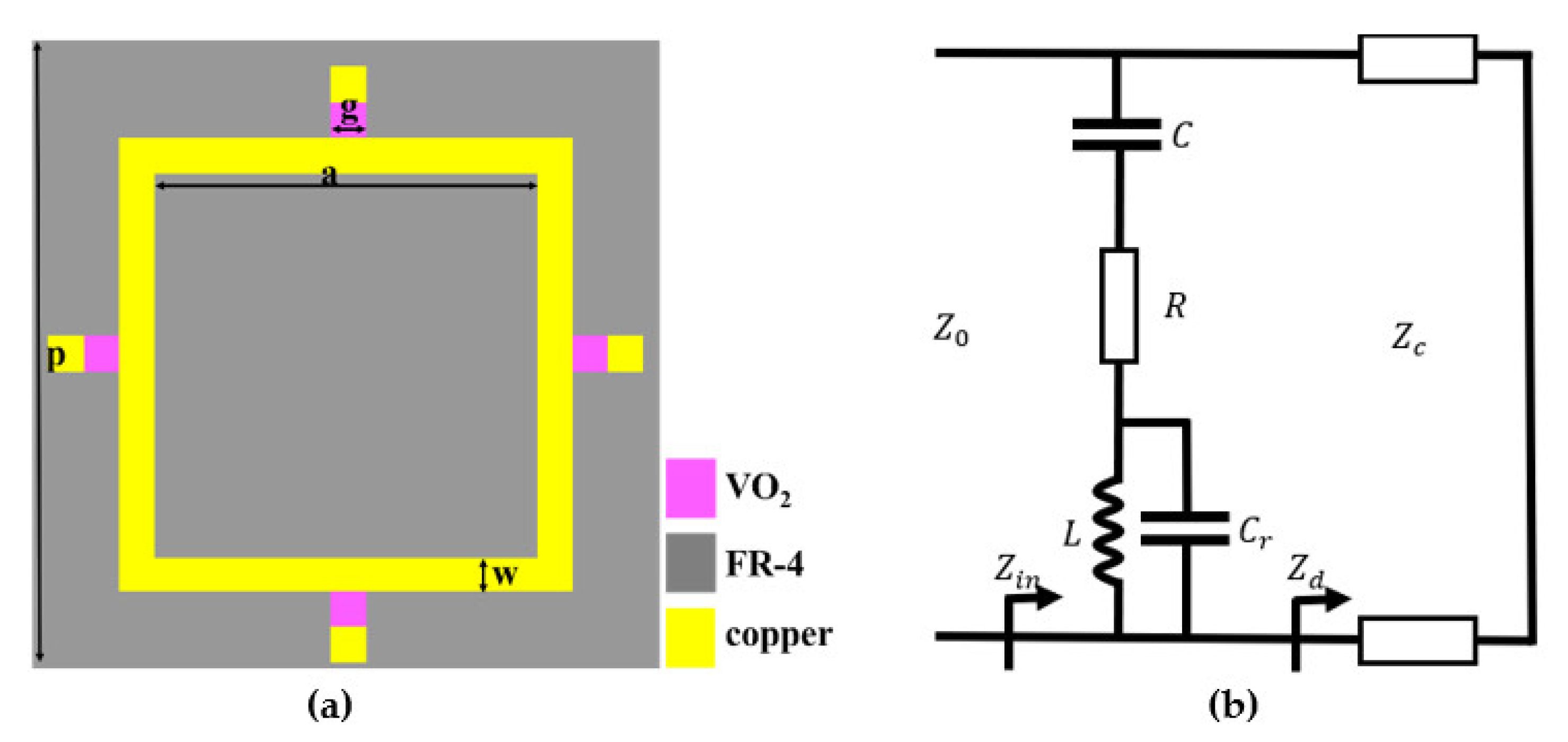

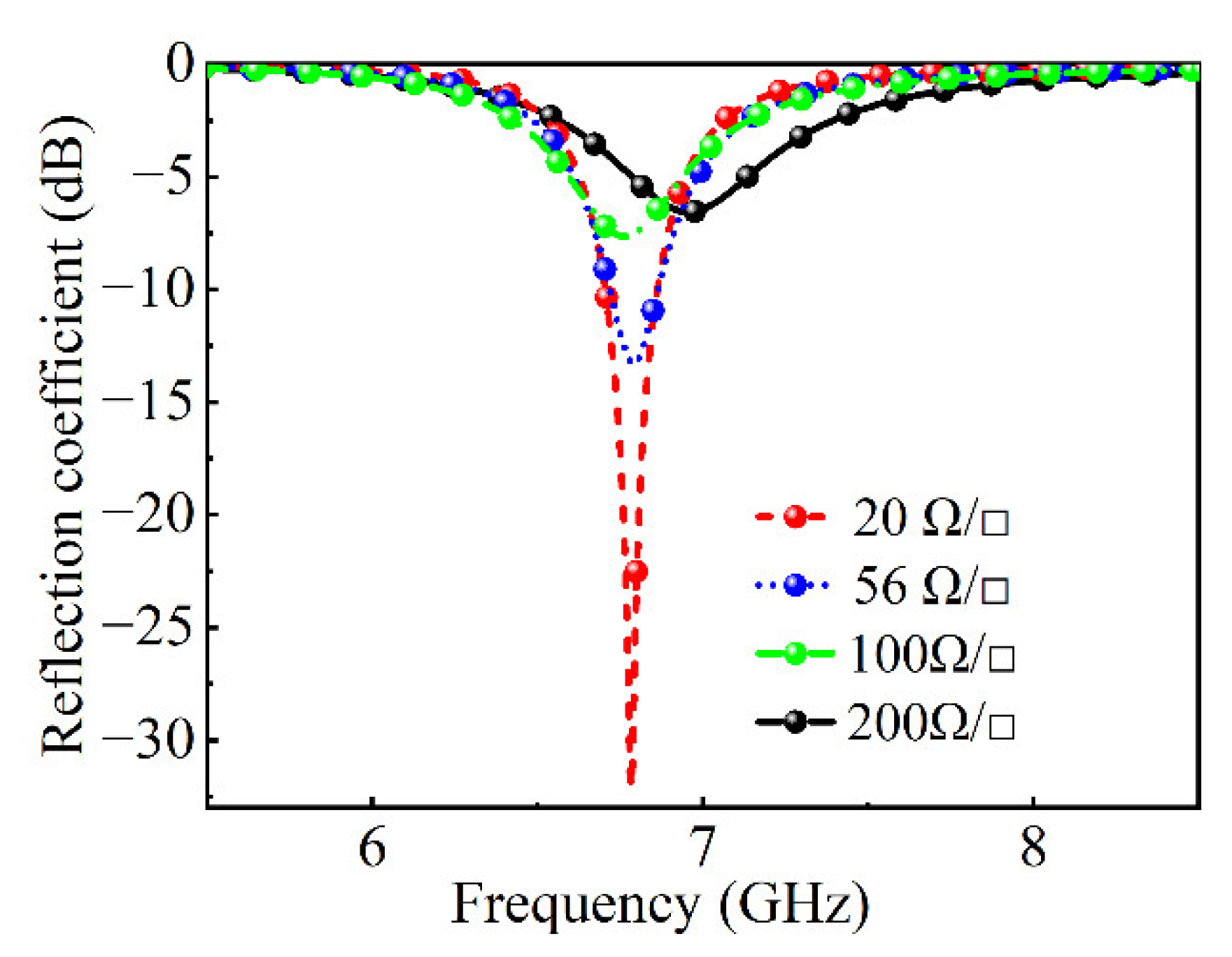
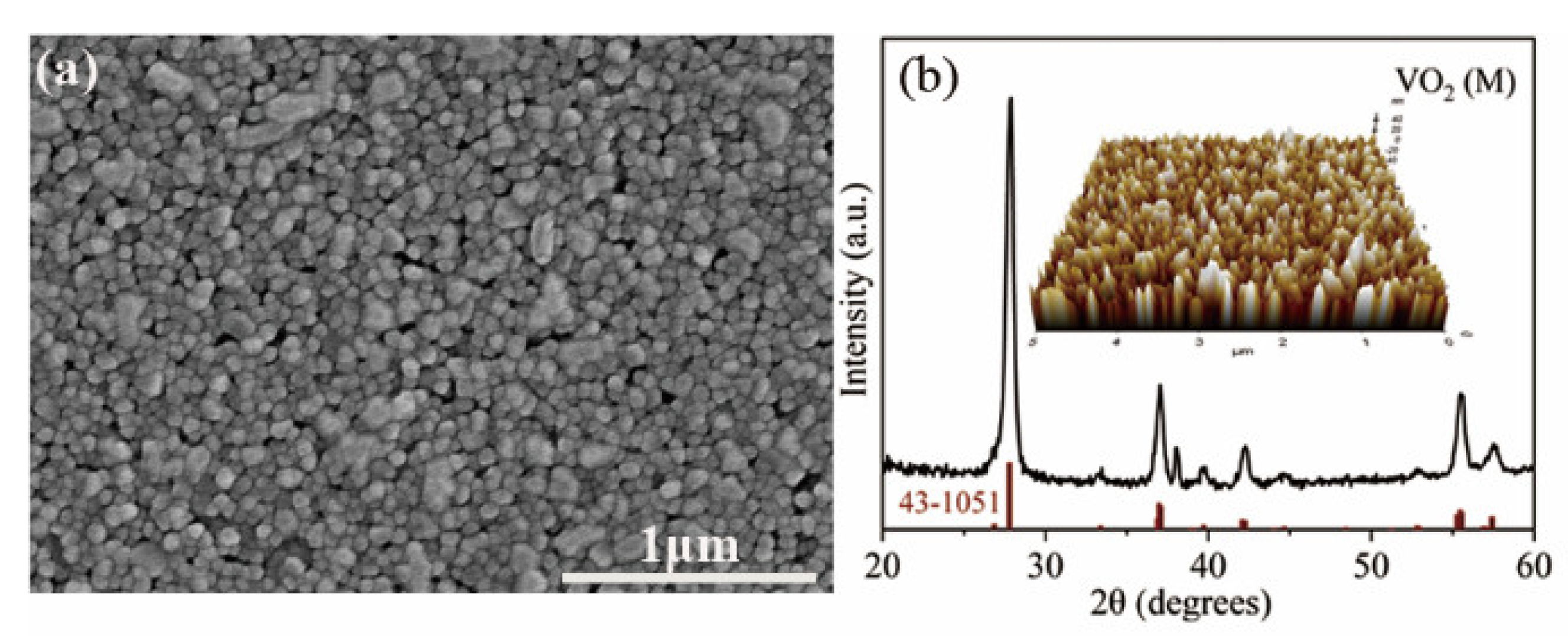
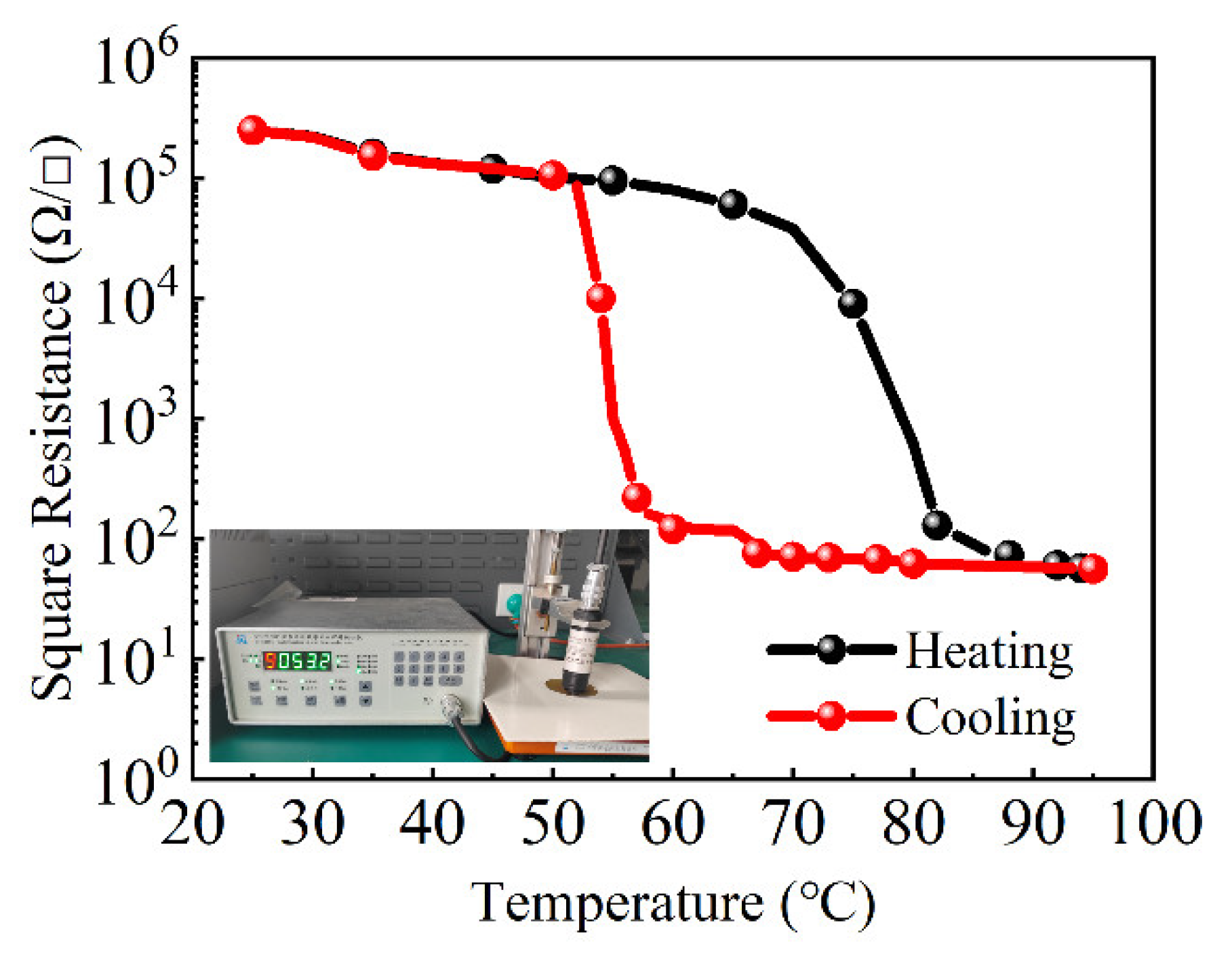
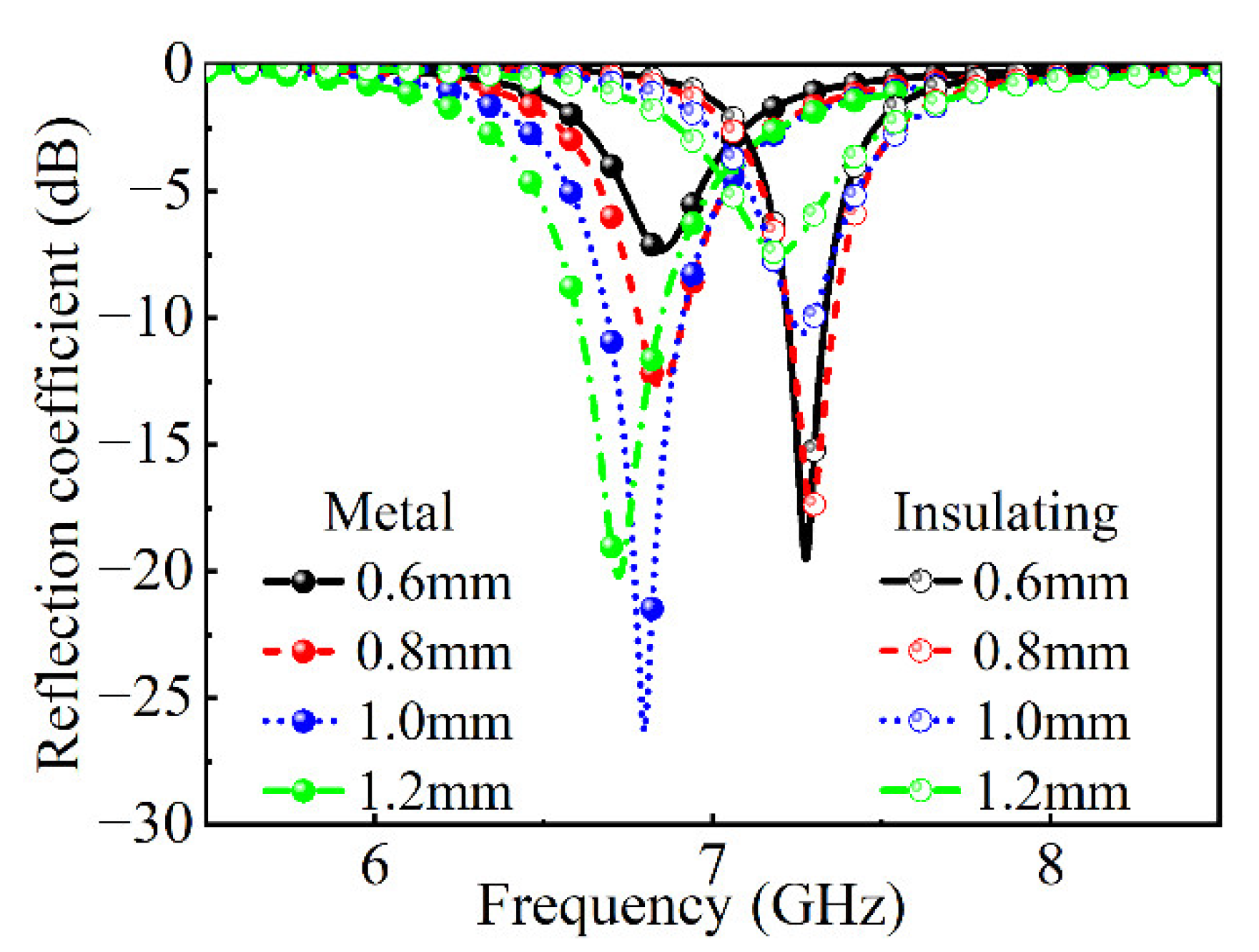

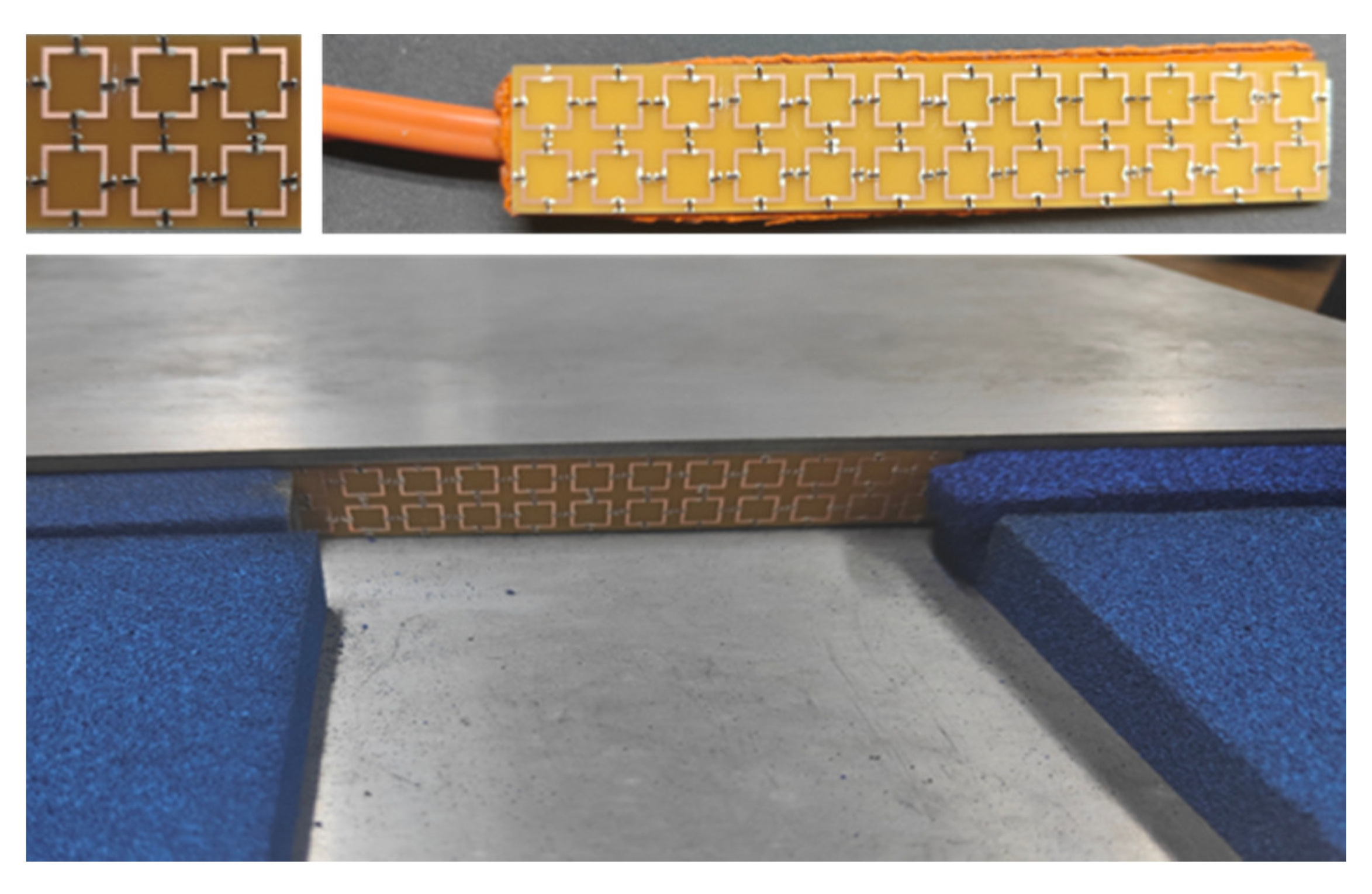
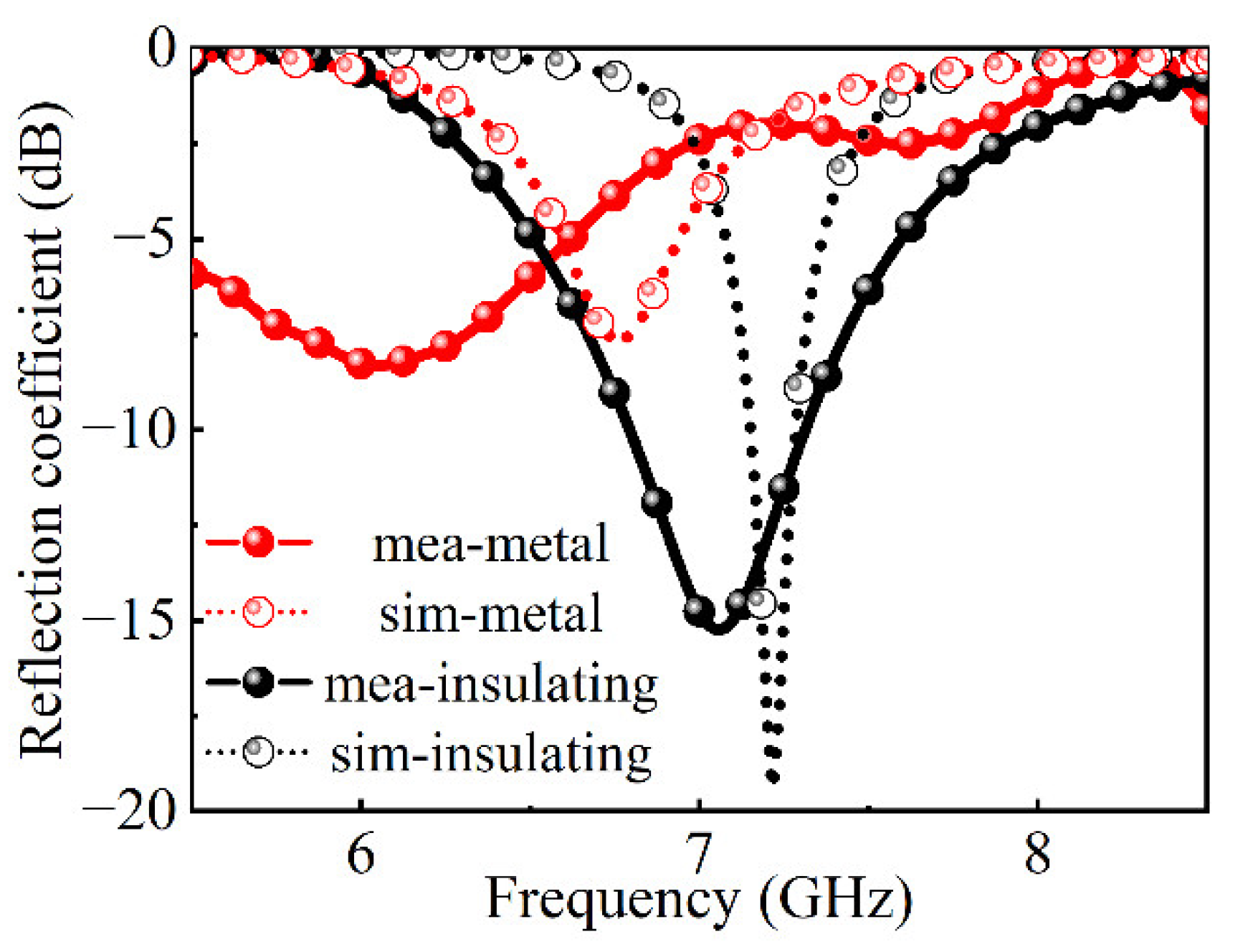
| Substrate Temperature | Sputtering Time | Annealing Time | Thickness | The Square Resistance | |
|---|---|---|---|---|---|
| Normal Temperature | Phase Change | ||||
| 475 °C | 45 min | 150 min | 180 nm | 0.5 MΩ/□ | 50 Ω/□ |
| 60 min | 150 min | 210 nm | 0.7 MΩ/□ | 2.8 kΩ/□ | |
| 180 min | 210 nm | 0.4 MΩ/□ | 190 Ω/□ | ||
| 425 °C | 50 min | 150 min | 210 nm | 0.5 MΩ/□ | 1 kΩ/□ |
| 180 min | 260 nm | 0.2 MΩ/□ | 56 Ω/□ | ||
| 350 °C | 40 min | 150 min | 330 nm | 0.4 MΩ/□ | 150 Ω/□ |
Publisher’s Note: MDPI stays neutral with regard to jurisdictional claims in published maps and institutional affiliations. |
© 2022 by the authors. Licensee MDPI, Basel, Switzerland. This article is an open access article distributed under the terms and conditions of the Creative Commons Attribution (CC BY) license (https://creativecommons.org/licenses/by/4.0/).
Share and Cite
Wang, Z.; Ma, Y.; Li, M.; Wu, L.; Guo, T.; Zheng, Y.; Chen, Q.; Fu, Y. A Thermal-Switchable Metamaterial Absorber Based on the Phase-Change Material of Vanadium Dioxide. Nanomaterials 2022, 12, 3000. https://doi.org/10.3390/nano12173000
Wang Z, Ma Y, Li M, Wu L, Guo T, Zheng Y, Chen Q, Fu Y. A Thermal-Switchable Metamaterial Absorber Based on the Phase-Change Material of Vanadium Dioxide. Nanomaterials. 2022; 12(17):3000. https://doi.org/10.3390/nano12173000
Chicago/Turabian StyleWang, Zhongbao, Yanli Ma, Ming Li, Liangfei Wu, Tiantian Guo, Yuejun Zheng, Qiang Chen, and Yunqi Fu. 2022. "A Thermal-Switchable Metamaterial Absorber Based on the Phase-Change Material of Vanadium Dioxide" Nanomaterials 12, no. 17: 3000. https://doi.org/10.3390/nano12173000
APA StyleWang, Z., Ma, Y., Li, M., Wu, L., Guo, T., Zheng, Y., Chen, Q., & Fu, Y. (2022). A Thermal-Switchable Metamaterial Absorber Based on the Phase-Change Material of Vanadium Dioxide. Nanomaterials, 12(17), 3000. https://doi.org/10.3390/nano12173000






